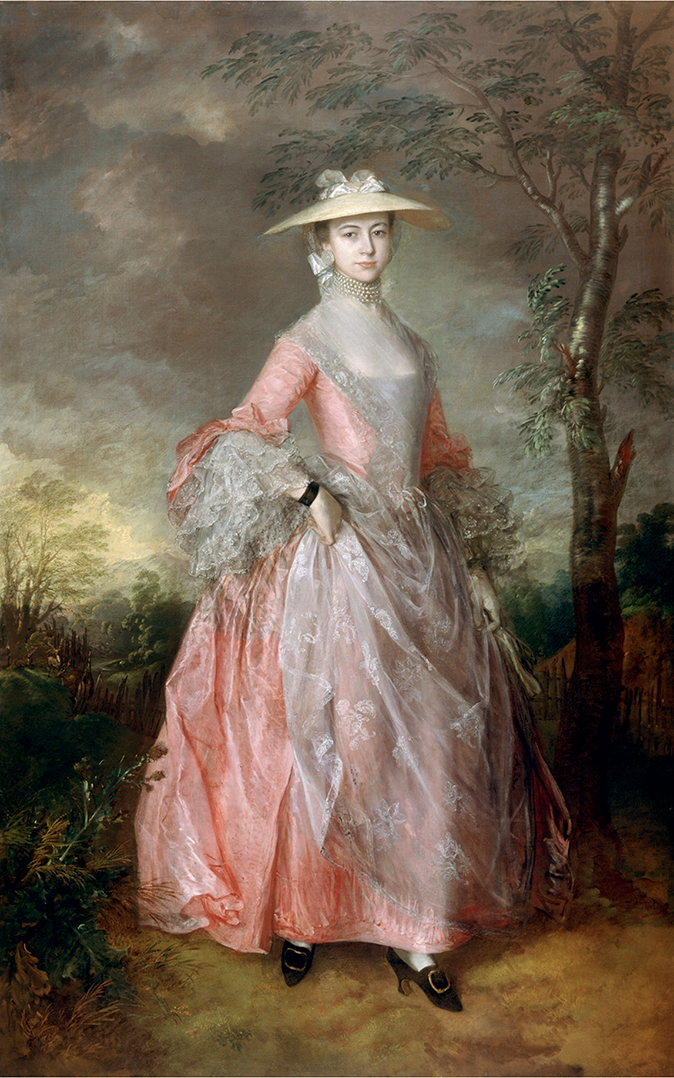My favourite painting: Norman Rosenthal
'Countess Howe became the woman of my dreams, and I would lie awake at night dreaming of unseen petticoats and beyond under her skirt'


Mary, Countess Howe, 1763/4, by Thomas Gainsborough (1727–88), 7ft 113 ⁄4in by 5ft 1in, Kenwood House, London NW3
Norman Rosenthal says: Countess Howe has a very special place in my affections as it was the very first great painting with which I engaged, possibly as early as 1951, when I was six. My mother used to walk me on a Sunday across Hampstead Heath from the end of the 187 Bus Route, which took us from our home in Warwick Avenue (then a very rundown area), to Kenwood House, that grand Adam Mansion near Highgate full of amazing paintings. This one hung high up at the end of the Orangery facing the beautifully landscaped park. Forever walking through a fantastically dreamy green woodland and wearing the most ravishing pink, long, lace dress with just her ankles showing and a beautiful straw ribboned hat, Countess Howe became the woman of my dreams, and I would lie awake at night dreaming of unseen petticoats and beyond under her skirt. Still, I consider no greater portrait was ever painted in England.
Sir Norman Rosenthal is an art historian and curator. His exhibition ‘Andy Warhol’ will be at the Ashmolean Museum, Oxford, February 4–May 15.
John McEwen comments on Mary, Countess Howe: In 1886, Guinness Breweries became a public company. Edward Guinness, sole proprietor, retired aged 43. He began to collect pictures, entertain and make benefactions. At the first Bond Street gallery he visited, the partners were at lunch and an assistant was unhelpful. Furious, he went to Agnews. The partners were out, but he was able to buy several pictures. After that, he never shopped anywhere else.
Within four years, he’d bought 240 pictures and drawings for his London and Suffolk houses. In 1891, he was raised to the peerage as Lord Iveagh and, in 1919, to an earldom. Six years later, he bought Kenwood, a 17th-century mansion modified by Robert Adam, which he refurbished and filled with 63 of his best pictures. At his death in 1927, he left the entirety to the nation ‘as an example of the artistic home of a gentleman of the eighteenth century’.
The Iveagh Bequest is epitomised by this full-length of Mary Hartopp, wife of the 1st Earl Howe (1726–99), her gorgeous outdoor (note protective apron) summer dress high-lit against a melancholy gloom. Her husband was a naval hero, the liberator of Gibraltar and victor over the French at the 1794 Battle of the Glorious First of June.
Gainsborough lived in Bath from 1759 to 1774. The spa town’s therapeutic waters made it the principal social resort of 18th century England and Lord Howe visited to cure his gout. He commissioned companion portraits, but Lord Iveagh chose only this one of Lady Howe—he preferred English portraits of women and children. Having said that, the most expensive of his Kenwood pictures (Rembrandt and Vermeer masterpieces included) was Gainsborough’s Greyhounds Coursing a Fox.
Exquisite houses, the beauty of Nature, and how to get the most from your life, straight to your inbox.
Country Life is unlike any other magazine: the only glossy weekly on the newsstand and the only magazine that has been guest-edited by His Majesty The King not once, but twice. It is a celebration of modern rural life and all its diverse joys and pleasures — that was first published in Queen Victoria's Diamond Jubilee year. Our eclectic mixture of witty and informative content — from the most up-to-date property news and commentary and a coveted glimpse inside some of the UK's best houses and gardens, to gardening, the arts and interior design, written by experts in their field — still cannot be found in print or online, anywhere else.
